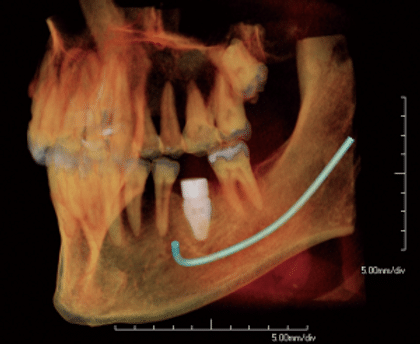How Bone Grafting Enhances Dental Implant Success
The quest for a perfect smile often leads many to consider dental implants as a solution for missing teeth. However, one critical aspect of the dental implant process that may not be as well-known is bone grafting. It plays a pivotal role in ensuring the longevity and success of a dental implant. But how exactly does bone grafting contribute to dental implant success?
In this article, we’ll dive into the importance of bone grafting for dental implant success and shed light on why it’s a crucial step for anyone considering tooth replacement through oral surgery.
Understanding Dental Implants
Before delving into bone grafting, let’s briefly touch on what dental implants are and why they’ve become a popular tooth replacement option.
Dental implants are essentially artificial tooth roots, typically made of titanium, that are placed into the jawbone to support a replacement tooth or bridge. Unlike dentures, they offer a permanent solution to tooth loss and can significantly improve oral health, chewing capability, and overall aesthetics.

The Role of Jawbone in Dental Implant Success
To understand why bone grafting is often necessary, we need to look at the role the jawbone plays in the success of dental implants.
The Jawbone’s Support
The jawbone is not just the foundation for our teeth; it also provides the necessary support for dental implants. When an implant is placed, it must integrate with the bone through a process called osseointegration. This process is critical as it ensures the implant is stable enough to handle the forces of chewing.
Bone Loss and Its Impact
When a tooth is lost or extracted, the bone that once surrounded the tooth root begins to deteriorate. This can lead to significant bone loss over time, resulting in a jawbone that’s too weak or thin to support an implant.
What Is Bone Grafting?
Bone grafting is an oral surgery procedure that rebuilds or repairs bones through the transplantation of bone tissue. By transplanting healthy bone tissue, we can recreate bone and supporting tissues that are missing.
The Bone Grafting Process
During a bone grafting procedure, the surgeon places a grafting material into the area where bone is missing. This material can be sourced from the patient’s own body, from a donor, or made of synthetic substances. Over time, the grafting material will help to regenerate new, healthy bone tissue.
Types of Bone Grafts
There are several types of bone grafts, each suited for specific situations:
- Autograft: Bone taken from the patient’s own body.
- Allograft: Donor bone from a bone bank.
- Xenograft: Bone from a different species, typically bovine.
- Alloplast: Synthetic bone-like material.

Why Bone Grafting Is Crucial for Dental Implant Success
Now that we have a basic understanding of what bone grafting is, let’s explore its importance in the context of dental implants.
Ensuring Adequate Bone Support
Bone grafting ensures that there is enough bone to support a dental implant. Without sufficient bone, an implant cannot be securely placed, which could lead to implant failure.
Preventing Bone Loss
Bone grafting not only provides the necessary support for implants but also helps prevent future bone loss. By stimulating bone growth, grafting helps maintain the jawbone’s shape and density.
Enhancing Aesthetic Results
For dental implants to look their best, they need to be surrounded by healthy bone and soft tissue. Bone grafting can help create a more natural-looking jawline and gum contour, which contributes to a more aesthetically pleasing result.
The Bone Grafting Procedure
Consultation and Planning
The process begins with a thorough consultation, where the surgeon will assess the patient’s jawbone density and determine the need for bone grafting. Advanced imaging techniques, such as CT scans, are often used to plan the procedure.
Surgery
The bone grafting procedure is typically performed under local anesthesia, but sedation options are available for those who may feel anxious about the procedure. The surgeon will make an incision in the gum to expose the bone, place the grafting material, and then close the incision with stitches.
Recovery
After the surgery, patients may experience swelling and discomfort, which can be managed with pain medication. The recovery time varies depending on the extent of the grafting. It’s crucial for patients to follow their surgeon’s instructions closely to ensure successful healing.
Post Bone Grafting: What to Expect
Healing and Osseointegration
Once the bone graft is in place, the healing process begins. It may take several months for the graft to fully integrate with the existing bone. During this time, it’s important for patients to maintain good oral hygiene and avoid putting pressure on the graft site.
Follow-Up Care
Regular follow-up appointments will be necessary to monitor the healing process and prepare for the next steps in the dental implant procedure.
The Final Steps
Once the graft has successfully integrated, and the jawbone is deemed strong enough, the surgeon can proceed with placing the dental implant.

Choosing the Right Surgeon for Bone Grafting
The success of bone grafting and dental implant procedures depends heavily on the skill and experience of the oral surgeon. Patients should do their research and choose a qualified surgeon with a track record of successful outcomes.
Conclusion
Bone grafting is more than just an additional step in the dental implant process—it’s a vital component that ensures the success and longevity of the implant. By addressing bone loss and providing a stable foundation, bone grafting sets the stage for a successful tooth replacement that can last a lifetime.
Whether you’re considering dental implants or have been told you need a bone graft, understanding the role of bone grafting can help you make informed decisions about your oral health. With the right care and a skilled surgeon, dental implants supported by bone grafting can restore not only your smile but also your confidence and quality of life.
Contact Legacy Dental in Boynton Beach, FL
If you’re considering dental implants or have questions about bone grafting, the experienced team at Legacy Dental in Boynton Beach, FL, is here to help. We offer comprehensive consultations and personalized treatment plans to ensure the best possible outcome for your dental health. Don’t wait to begin your journey to a healthier, more confident smile. Contact Legacy Dental today to schedule your appointment!



